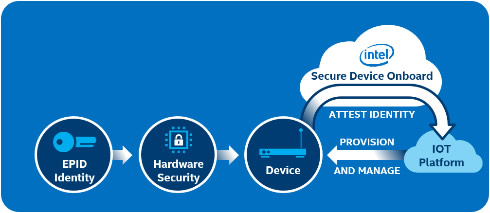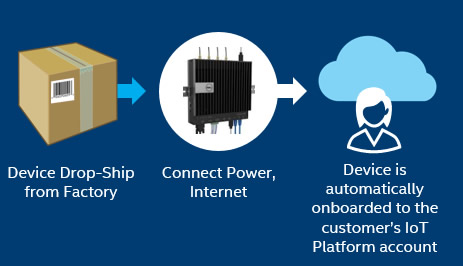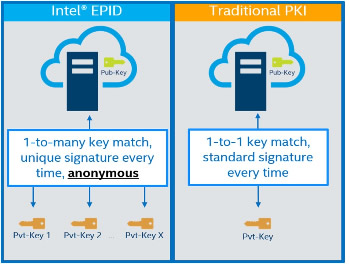
Intel Secure Device Onboard Makes onboarding of Billions of Devices Simpler
Intel today launched the Intel Secure Device Onboard (Intel SDO) service, designed to accelerate trusted onboarding of IoT devices- from minutes to seconds - with an automated process.
Announced at the IoT Solutions World Congress, Intel SDO will scale IoT deployments to put more devices into service faster. Intel SDO enables owners to simply power on devices, then the service dynamically sets up the initial connectivity, authenticates the device, and registers it with the IoT platform's methods. The service delivers privacy protection and a secure device baseline, ready for update.
Imagine you're going to install 10,000 smart light bulbs in a factory. How much time should you schedule? Before they can start streaming data, you need to key in each device identity, coordinate network credentials with IT, and register each device with the operational technology (OT) smart building control platform.
If you guess 20 minutes per bulb, you're about right. For 10,000 bulbs, you'd need almost two years!
The Intel SDO securely automates and brings IoT devices online within seconds rather than hours. It is offered to IoT platform providers as a service they can provide to customers who wish to onboard thousands of connected devices.


Intel SDO's "zero touch" model allows devices to dynamically discover the customer's IoT platform account at power-on for automatic registration. It offers a one-to-many, one-time enablement solution that can be integrated into almost any device or IoT platform, thereby eliminating the need to custom pre-load provisioning configurations for each IoT implementation.
The Intel SDO also leverages Intel's privacy-preserving IoT identity solution, the Intel Enhanced Privacy ID (Intel EPID), to anonymously authenticate the device and establish an encrypted communication tunnel, thereby preventing hackers from tracing the device from factory to owner. Intel EPID is a proven method with over 2.7 billion keys distributed in Intel and non-Intel MCU processors since 2008.

Intel has expanded the availability of Intel SDO across the IoT ecosystem. Other silicon providers like Infineon, Microchip and Cypress Semiconductor will embed the EPID identity capability in their hardware. Cloud service platform and device management software providers like Google Cloud, Amazon Web Services (AWS), Microsoft Azure and Intel's Wind River Helix Device Cloud intend to provide integration to support Intel SDO's zero touch model.
Intel SDO is now integrated with Wind River Helix Device Cloud, its device lifecycle management platform that enables IoT devices to connect, monitor, manage and service devices. With the integration of Intel SDO, Wind River's latest release of Device Cloud includes zero touch onboarding designed to mitigate the risk of security attacks to a device, ensure privacy and deliver automation that reduces installation and onboarding time to mere seconds, among other new features and capabilities.





















